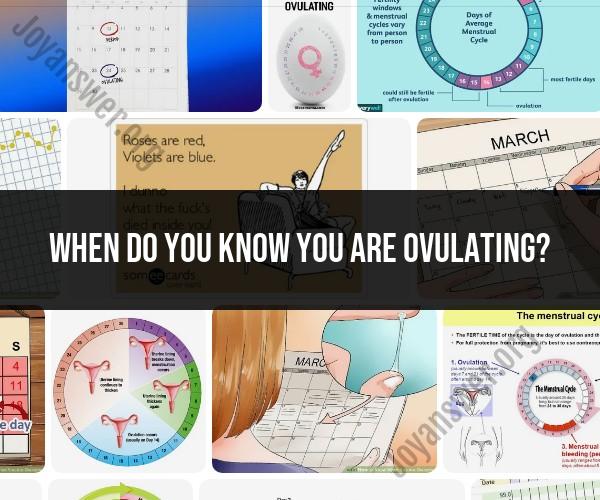When do you know you are ovulating?
Ovulation is a critical phase of the menstrual cycle, and there are several signs and symptoms that can help you recognize when you are ovulating. Here are some common indicators of ovulation:
Change in Cervical Mucus:
- During ovulation, cervical mucus typically becomes clear, slippery, and more stretchy, resembling the consistency of egg whites. This fertile cervical mucus is conducive to sperm survival and facilitates their journey through the cervix.
Increase in Basal Body Temperature (BBT):
- Your basal body temperature, which is your body's temperature at rest, typically rises slightly (about 0.5 to 1 degree Fahrenheit) after ovulation. Charting your BBT over several cycles can help you identify a temperature shift and pinpoint the day of ovulation.
Mild Pelvic Pain or Mittelschmerz:
- Some individuals experience a mild, one-sided pelvic pain or discomfort known as mittelschmerz during ovulation. It usually lasts a few hours to a couple of days and can help identify the side from which the egg is released.
Breast Tenderness:
- Hormonal changes during ovulation can lead to breast tenderness or sensitivity in some individuals.
Increased Libido:
- Some people experience an increased sex drive or heightened libido around the time of ovulation, which may be nature's way of encouraging reproduction.
Ovulation Predictor Kits (OPKs):
- Over-the-counter ovulation predictor kits are available and can detect the surge in luteinizing hormone (LH) that occurs just before ovulation. A positive OPK result indicates that ovulation is likely to occur within the next 24-36 hours.
Pelvic Fullness or Bloated Feeling:
- Some individuals report a sensation of pelvic fullness or a slightly bloated feeling during ovulation.
Light Spotting:
- A small amount of spotting or bleeding, known as ovulation spotting, can occur when the follicle ruptures to release the egg. This is relatively rare and not experienced by everyone.
It's important to note that not everyone experiences these signs, and some individuals may have subtle or no noticeable symptoms of ovulation. Additionally, the timing of ovulation can vary from person to person and even from month to month.
If you are actively trying to conceive, monitoring these signs and symptoms can help you identify your fertile window and increase your chances of becoming pregnant. Alternatively, if you are trying to avoid pregnancy, these signs can help you determine when it's less likely to conceive. If you have concerns about your menstrual cycle or fertility, consider consulting a healthcare provider or a fertility specialist for personalized guidance.












